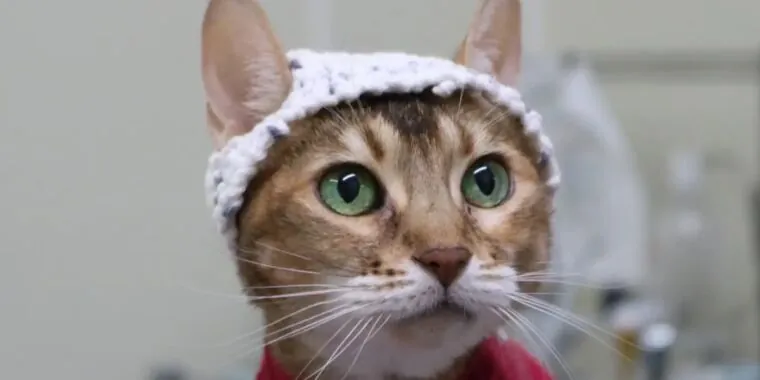
Groundbreaking Study Uses Crocheted Hats to Unveil Chronic Pain in Cats!
2024-09-27
Author: Lok
Introduction
Cats have long held a reputation for being independent and sometimes uncooperative, making it a tall order for researchers trying to study their behaviors in controlled environments. A team of innovative scientists from the University of Montreal in Quebec, Canada, found a delightful yet practical solution: adorable crocheted hats! These charming accessories were crucial in their recent study published in the Journal of Neuroscience Methods, where they successfully recorded the electrical activity in the brains of conscious cats for the first time.
Chronic Pain in Cats
Shocking statistics reveal that around 25% of adult cats suffer from osteoarthritis and chronic pain, conditions that tend to escalate as they age. Currently, treatment options are limited, primarily revolving around non-steroidal anti-inflammatory drugs, which often come with significant side effects. Recently, a breakthrough injectable monoclonal antibody designed for cats was developed to counteract excessive nerve growth factors. Still, many alternative treatments, including various supplements and regenerative therapies, remain untested. There is even an intriguing avenue yet to be explored: the influence of different smells and lighting on the pain perception of our feline companions.
The Research Project
This ambitious project by the Montreal researchers aimed to establish a better understanding of how cats experience pain. Initially, they faced a challenge when attempting to attach electrodes to 11 awake cats diagnosed with osteoarthritis—many of the clever kitties managed to shake off the electrodes. Co-author Aliénor Delsart humorously remarked, “When you spend more time putting electrodes back on than you do actually recording the EEGs, you get creative.” Hence, a graduate student with crocheting skills stepped up to design little hats that not only secured the electrodes but also distracted the cats from the dangling wires.
Experimental Procedure
Once the hats were fitted, the researchers could dive into the first phase of the experiments. They aimed to monitor the cats' brain responses to a variety of stimuli, including the scent of grapefruit for olfactory testing and colored lights for visual stimulation. The carefully controlled environment included adequate lighting, temperature, and humidity, complemented by perches, beds, scratching posts, and toys to ensure the comfort of the feline participants.
Results and Insights
Thanks to the application of a conductive paste, the researchers managed to attach electrodes without shaving the cats' fur. They initially recorded the base brain activity before moving on to expose the cats to sensory stimuli. This method, while witnessing some minor motion artifacts, still paved the way for vital insights into feline cerebral responses.
Conclusion
Although the sample size was modest and the study design primarily descriptive, the researchers declared their approach feasible. They successfully assessed how the cats reacted to targeted sensory stimuli, opening up potential pathways to further investigate chronic pain mechanisms in cats and develop innovative therapeutic strategies.
This study has set the stage for groundbreaking advancements in how we understand and treat chronic pain in our beloved pets. It showcases the power of creativity and adaptation in research, proving that even a simple crocheted hat can lead to significant discoveries in feline health!




 Brasil (PT)
Brasil (PT)
 Canada (EN)
Canada (EN)
 Chile (ES)
Chile (ES)
 España (ES)
España (ES)
 France (FR)
France (FR)
 Hong Kong (EN)
Hong Kong (EN)
 Italia (IT)
Italia (IT)
 日本 (JA)
日本 (JA)
 Magyarország (HU)
Magyarország (HU)
 Norge (NO)
Norge (NO)
 Polska (PL)
Polska (PL)
 Schweiz (DE)
Schweiz (DE)
 Singapore (EN)
Singapore (EN)
 Sverige (SV)
Sverige (SV)
 Suomi (FI)
Suomi (FI)
 Türkiye (TR)
Türkiye (TR)